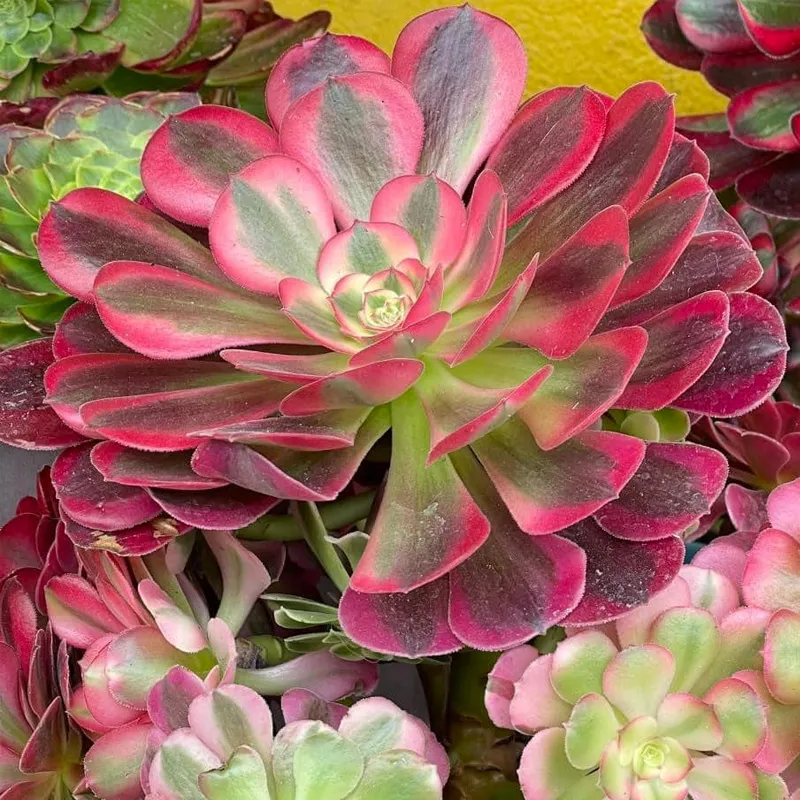Exploring the Acoraceae Plant Family: A Deep Dive into its Unique Genera
As someone who has always been fascinated by the diversity of plant families, the Acoraceae family stands out to me for its simplicity and its unique characteristics. This plant family may not be as popular or varied as some others, but its subtle charm and the role it plays in botanical ecosystems have drawn me in over time.
Overview of the Acoraceae Family
The Acoraceae family is relatively small, comprising only a single genus, Acorus, and about two or three species. Though it’s not expansive, the family is ancient and belongs to the order Acorales. Acorus plants are often referred to as sweet flags because of their grass-like appearance and fragrant rhizomes.
One of the reasons I find Acoraceae particularly interesting is its unique evolutionary history. It has ancient origins, with fossil records dating back millions of years. This family used to be classified under the Araceae family due to some superficial similarities, but molecular studies eventually confirmed its distinction as a separate family. Despite its modest size, Acoraceae plays a crucial role in understanding the evolutionary history of monocots.
A Closer Look at the Species
While the classification of Acorus might seem complex, identifying the different species can be equally challenging:
- Acorus calamus: This is the most widespread species, often referred to as “sweet flag” or simply “calamus.” It’s characterized by its tall, reed-like leaves and a distinct spicy-sweet fragrance. Interestingly, it rarely produces fertile seeds and mostly reproduces through its rhizomes, making it a bit of a botanical rebel. Plant FAQs: Acorus Calamus
- Acorus americanus: This North American native was once considered a variety of Acorus calamus but has since earned its own species status. It can be distinguished by subtle differences in its leaf structure and the fact that it actually produces seeds.
- Acorus gramineus: This species, native to East Asia, is much smaller than its relatives, with grass-like leaves. It’s often cultivated for ornamental purposes and even finds its way into aquariums. Plant FAQs: Acorus Gramineus
- Acorus verus: This species is somewhat of a taxonomic puzzle, with ongoing debate about its distinctness from Acorus calamus.
Distinct Features of Acoraceae Plants
What really sets the Acoraceae family apart is its simplicity. Acorus species are rhizomatous, meaning they grow from horizontal underground stems. This makes them effective at stabilizing wet soils, which is why you often find them thriving near water. They have sword-like leaves that resemble those of irises or grasses, but the sweet scent of their rhizomes is what gives them their unique identity.
Another intriguing feature of the Acorus genus is its flowers. They’re not particularly showy or attention-grabbing, but I’ve always admired how subtle they are. The flowers grow on a spike-like inflorescence called a spadix, which emerges directly from the base of the plant. Unlike many flowering plants, the inflorescence of Acorus is inconspicuous and often hidden by the foliage.
Growing and Caring for Acorus Plants
If you’re thinking of adding an Acorus plant to your garden, they’re relatively easy to grow, provided you can mimic their natural habitat. They thrive in moist, swampy areas and are perfect for pond margins or wetland gardens. I’ve found that they do best in full sun to partial shade, with rich, well-draining soil. Even though they prefer wet conditions, they can tolerate short periods of drought once established.
One of the things I love about growing Acorus species is their resilience. They can withstand poor soil conditions and are relatively pest-resistant. This makes them a low-maintenance choice for gardeners who want to add greenery to water features or moist garden beds.
Significance and Uses of Acorus
One of the most fascinating aspects of the Acorus genus is its historical and cultural significance. For centuries, Acorus calamus has been used in various traditional medicines, particularly in Ayurvedic and Chinese medicine. Its rhizomes were believed to have a range of medicinal properties, from treating digestive issues to enhancing mental clarity. Even today, some herbalists continue to explore its potential benefits, though modern research on its safety is still limited.
In landscaping, Acorus species are often used for their ornamental value. I’ve seen them incorporated into water gardens, where their upright foliage adds texture and movement. They’re also a great option for erosion control along the edges of ponds or streams, as their rhizomes help anchor the soil.
Final Thoughts
Though the Acoraceae family may seem small and unassuming, it holds a significant place in both botanical history and modern horticulture. I’ve come to appreciate the elegance of its simplicity—how a family with just one genus and a few species can still be so impactful. Whether you’re interested in their historical uses, their role in garden design, or simply their resilient nature, the Acorus plants have a lot to offer.
As I continue to explore the plant world, I find that families like Acoraceae remind me that it’s not always about quantity but about quality and uniqueness. Even in the smallest of plant families, there’s a world of fascination to uncover.
If i die, water my plants!



